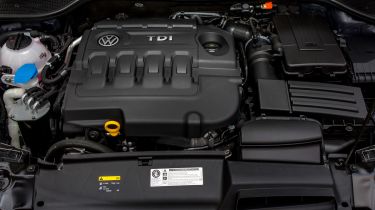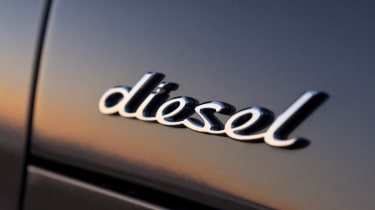Engine size explained: what size engine do you need?
Engine size plays a big role in a car’s performance and economy – we cover what it means and what to look for when shopping for your next car

If you’re in the market for a new car, it’s important to understand what engine size means and how it affects a car’s performance and economy. Engine size, also referred to as ‘engine capacity’ or ‘engine displacement’, is a measurement of the total volume of the cylinders in a car’s engine. If that sounds a bit technical, don’t worry – we’ll explain everything you need to know in this article.
Many manufacturers offer their petrol and diesel cars with a range of different engine sizes. Historically, smaller engines – such as those found in superminis and city cars – tended to make less power but were more economical, while bigger engines made more power at the expense of fuel efficiency. Today, engine power and efficiency are less dependent on engine size, as new technologies allow manufacturers to squeeze plenty of power out of a small engine. But as a general rule, larger engines still use more fuel and emit greater emissions than smaller ones.
What does engine size mean?
Engine size, engine capacity and engine displacement all refer to the total volume of the cylinders in the engine. This is usually expressed in litres or cubic centimetres (cc). Engine size isn’t a measurement of the physical size of the engine – although a larger engine size will often result in a physically bigger engine.
A car with a four-cylinder engine, each cylinder with a volume of 250cc (cubic centimetres), would equate to a 1,000cc engine – more commonly referred to as 1.0-litre. Engine sizes tend to be rounded up or down to the nearest tenth of a litre (1,380cc is usually expressed as 1.4 litres, while 1,320cc would be classed as 1.3 litres).
What difference does engine size make?
Engine size can have a big impact on the performance and fuel economy of an engine, and that’s for one main reason. With a larger engine size, there’s more space for air and fuel to mix in each of the cylinders. Air and fuel, when ignited in the engine, produce the power needed to turn the wheels. With more air and fuel in each cylinder, more power can be produced. Therefore, a car with a 4.0-litre engine would typically make more power than a car with a 2.0-litre engine. More power usually translates to a faster car.
The trade off is that bigger engines generally burn more fuel and therefore return worse fuel economy. It’s for this reason that the smallest engines are often found in city cars and superminis, where fuel efficiency is more important than performance. On the other hand, supercars often have large engines, as power is the priority.
However, the widespread application of turbocharging has complicated things. A turbocharger is a device that forces more air into a smaller engine, allowing it to produce more power than an engine of the same size without a turbocharger (known as a ‘naturally aspirated’ engine). As a result, many modern turbocharged 2.0-litre engines are more powerful than older 4.0-litre non-turbocharged engines, while still returning good fuel economy.
The majority of new combustion engines found in family cars are turbocharged, thanks to this balance of performance and economy. Some examples of turbocharged engines include Ford’s EcoBoost, Suzuki’s BoosterJet and Volkswagen’s TFSI and TDI series. Even the latest Formula 1 race cars use relatively puny 1.6-litre engines, but turbocharging makes them some of the most powerful in the world.
Modern hybrid systems can also improve performance without the need to increase engine size. An electric motor is used alongside the engine to provide extra assistance, reducing the strain on the engine. This has allowed manufacturers to fit smaller engines to their cars to improve efficiency without sacrificing performance. For example, the latest Volkswagen Tiguan eHybrid puts out 268bhp from a combination of a small 1.5-litre engine and an electric motor – that’s more than the old model’s 2.0-litre non-hybrid engine.
How important is engine size?
Generally speaking, engine size is no longer massively important for modern cars, thanks to turbocharging and hybrid systems. It can be a quick way to assume how powerful an engine is – for example, a 5.0-litre engine will nearly always be more powerful than a 2.0-litre engine. But this is not a hard and fast rule, often breaking down when comparing engines that are closer in size – for example, a 1.8-litre engine versus a 2.0-litre engine.
Instead, it’s more important to check a car’s power output, fuel efficiency and emissions figures. In the UK, the most common measurement for a car’s power is brake horsepower (bhp), and fuel economy is measured in miles per gallon (mpg). CO2 emissions are measured in grams per kilometre (g/km). When comparing cars, it's far more useful to compare these figures rather than just engine size – Carbuyer provides them in each of our in-depth reviews.
How does engine size affect performance?
As a larger engine is generally able to burn more fuel and produce more power, a car with a larger, more powerful engine is likely to be able to accelerate faster and tow heavier loads than a similarly-sized car with a smaller engine.
This statement is less accurate today than it was in the past, given that smaller turbocharged engines are able to produce more power than some bigger engines without a turbocharger. However, even if both engines produce the same power output – 300bhp for example – the way that power is delivered can feel very different from behind the wheel.
When you depress the accelerator in a non-turbocharged car with a bigger engine, you’re likely to feel the acceleration more immediately. In a car with a smaller turbocharged engine, there can be a delay known as ‘turbo lag’ – this happens as it can take a few seconds for the turbocharger to force air into the engine. However, turbo lag is much less of an issue with smaller turbocharged systems and those used in modern engines.
The size and weight of the car is worth bearing in mind, too. For example, a 1.4-litre engine in a supermini will usually deliver sprightly acceleration and strong fuel economy, but the same engine in a heavier SUV will be required to work much harder to achieve similar performance and will use more fuel in the process.
How does engine size affect fuel economy?
Larger engines usually consume more fuel than smaller engines under the same driving conditions. This is because they’re able to burn more fuel and air and, therefore, produce more power.
This is a very important consideration when it comes to choosing a new car. With more powerful, bigger-engined cars usually costing more and using more fuel than those with a smaller engine, it’s worth thinking about how much power you actually need.
If your everyday driving typically doesn’t involve much hard acceleration, carrying of heavy loads or cruising at high speeds, you may find that a smaller, less powerful engine will save you money on fuel. Company car users will make a saving on Benefit-in-Kind (BiK) tax, too, as that's linked directly to CO2 emissions, although an all-electric car will nearly always be cheapest.
Small engines tend to suit cars that are used predominantly around town. They provide enough performance for short journeys where high speeds and rapid acceleration aren’t really necessary. As the engine isn’t regularly needed to produce lots of power, it makes sense to keep it small and take advantage of the gains in fuel economy.
Larger engines, which don't have to work as hard to produce high levels of power, were formerly the default among those who make frequent high speed motorway journeys. However, modern technology can make a small engine behave like a much larger one, and even a modestly sized engine might be perfectly at ease on a long motorway journey.
Remember that your driving style will also dictate how much fuel you'll use. Keeping the revs low by changing up to the highest possible gear will help save fuel, as will accelerating gently. Keeping tyres correctly inflated could save you hundreds of pounds each year, too.
Your car's engine size and power will also have an effect on your insurance premium. Cars in low insurance groups (i.e. that are cheap to insure) tend to have smaller, less powerful engines.
What’s the difference between petrol and diesel?
Petrol and diesel are both derived from oil but the way they are produced and the way they are used inside car engines is different, which is why you should never put the wrong fuel in your car. Diesel is more energy rich than petrol per litre and the differences in how diesel engines work make them more efficient than their petrol counterparts.

A diesel engine of the same size as a petrol engine will nearly always be more economical. This might make the choice between the two seem straightforward but sadly it isn’t, for several reasons. One is that diesel cars are more expensive, so often you need to be a high-mileage driver in order to see the benefit of the economy versus the higher price. Another related reason is that diesel cars need regular runs on the motorway to stay in good condition, so if you only want a car for town driving, a diesel may not be suitable. A third reason is that diesels produce more local pollutants like oxides of nitrogen, which have more of an impact on air quality. This can also incur further costs in pollution-controlled areas such as the ULEZ in London.
Petrol and diesel engines have different characteristics. Diesel is a good fuel for long-distance, low-rev driving, such as motorway cruising. It also produces lots of power at low engine speeds, making it ideal for towing caravans.
Petrol, on the other hand, is often better for smaller cars and is generally more popular in hatchbacks and superminis. In terms of fuel economy, the choice between a diesel and a petrol engine can be tricky – see our 'petrol or diesel' guide here.
Why would I want a large engine?
While small, turbocharged engines can produce more power than many bigger engines made in the past, it still holds as a general rule that a large engine is capable of producing more power. Buyers that would benefit from a large engine include caravan owners and people intending to travel long distances on motorways, particularly if the car is full. Cars with large engines can also be fun for those who enjoy driving, as they tend to deliver extra power and noise – an important ingredient for fans of fast cars.
Additionally, cars that are large and heavy in their own right tend to require larger engines. Large SUVs like the Range Rover require more energy to get moving and maintain speed.
It's hard to give an absolute rule on what engine size will be sufficient for your specific needs because there are engines of similar sizes that perform significantly differently.
Frequently Asked Questions
If you don't want an engine in your next car, check out our guide to the best electric cars.
Car engines made simple
Most Popular
Tips & advice

Car dashboard warning lights: what does each symbol mean?

Electric car charging stations: public networks, charger types, apps and maps






